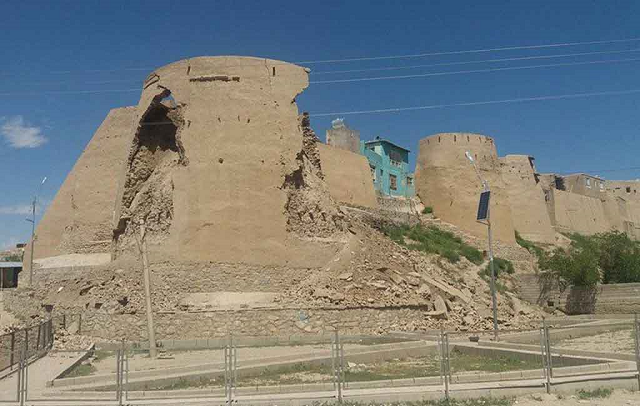Ancient Afghan citadel collapses, cultural heritage sites at risk
Raising concerns about the government’s ability to protect the country’s cultural heritage

The old citadel known as Ghaznain Fort originally had 36 towers, but 14 of the towers had collapsed in recent years due to decades of war, heavy rain and neglect. PHOTO: TWITTER
The old citadel known as Ghaznain Fort originally had 36 towers, but 14 of the towers had collapsed in recent years due to decades of war, heavy rain and neglect.
The fort is one of dozens of unique historic sites in Afghanistan - ranging from the pre-Islamic Buddhist center in the Bamyan valley to the 12th century minaret of Jam in a remote area of Ghor province - in urgent need of protection.
Officials in Ghazni, which nearly fell to the Taliban last year in some of the heaviest fighting seen in the war, said the tower collapsed on Tuesday following heavy rain. A short video posted on social media shows it crumbling but local residents say negligence also contributed to its collapse.
A tower in the ancient Ghaznain Fort in Ghazni’s old city collapsed on Tuesday. The fort had 32 towers, most of which have collapsed over the past few years due to “inattention” by relevant government departments. pic.twitter.com/fvo9ntb3Vo
— TOLOnews (@TOLOnews) June 11, 2019
“The government paid no attention to the sites and didn’t build canals to divert flood water,” said Ghulam Sakhi, who lives near the citadel.
“We have warned the government about the dire condition of the citadel but no one visited,” Sakhi said.
Mahbubullah Rahmani, acting director of culture and information in Ghazni, said heavy rain and recent fighting had contributed to the tower’s collapse but said the government was working on a plan to protect the site from complete destruction.
He said a German archaeologist had worked at the site as recently as 2013.
Ghazni, a strategically vital center on the main highway between Kabul and southern Afghanistan and two hour drive from the capital, is home to a range of cultural and archeological artifacts, some of which date back to pre-Islamic period.
The province and its cultural heritage was officially declared as Asian Capital of Islamic Culture in 2013 by the Islamic Educational, Scientific and Cultural Organisation, a Morocco-based body created in 1981, supported by UNESCO.
The collapse of the tower in Ghazni follows concern over the condition of the 900-year-old Minaret of Jam, in Ghor, which has been on the UNESCO List of World Heritage Properties in Danger since 2002.
The Taliban during their austere regime from 1996-2001, before they were toppled by the US and coalition force in late 2001, blew up two giant Buddha statues in central Bamiyan province, calling them idols.



















COMMENTS
Comments are moderated and generally will be posted if they are on-topic and not abusive.
For more information, please see our Comments FAQ